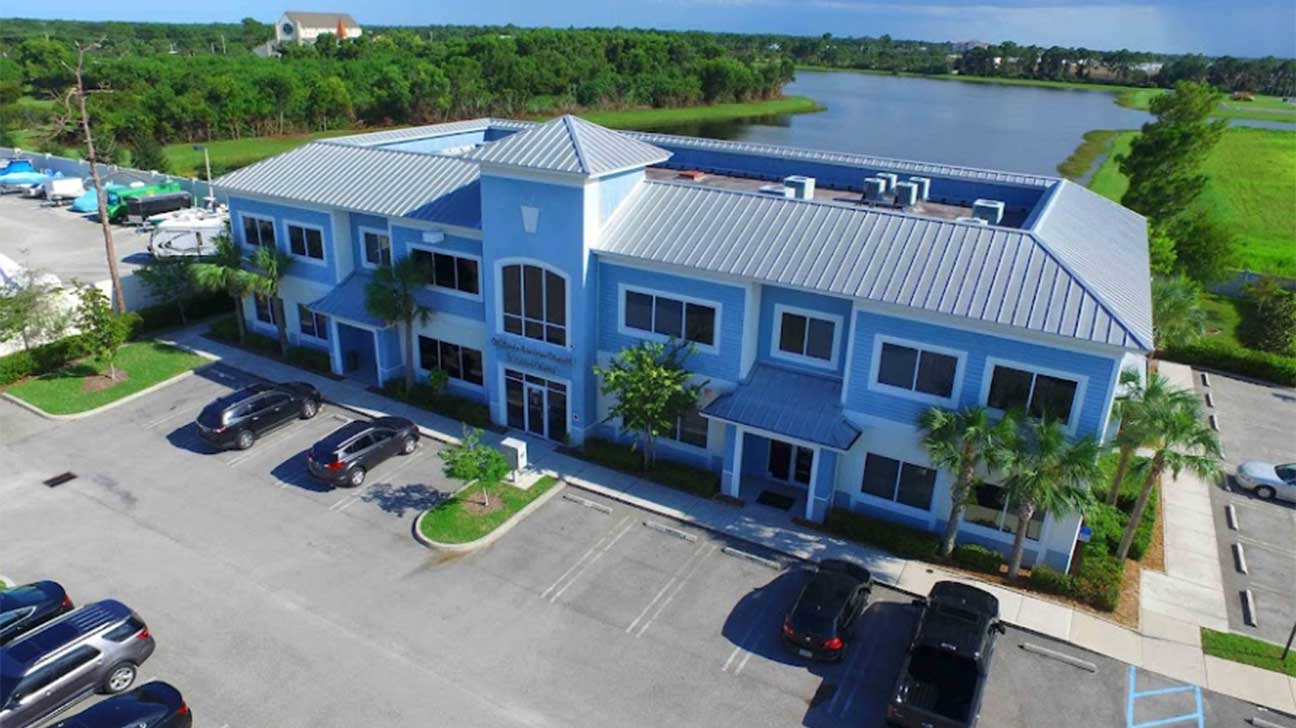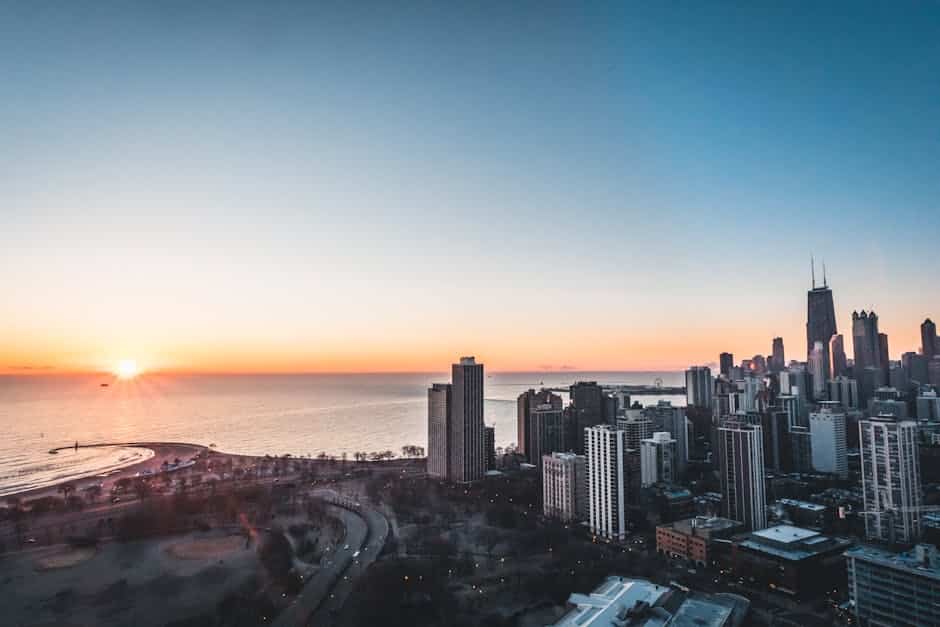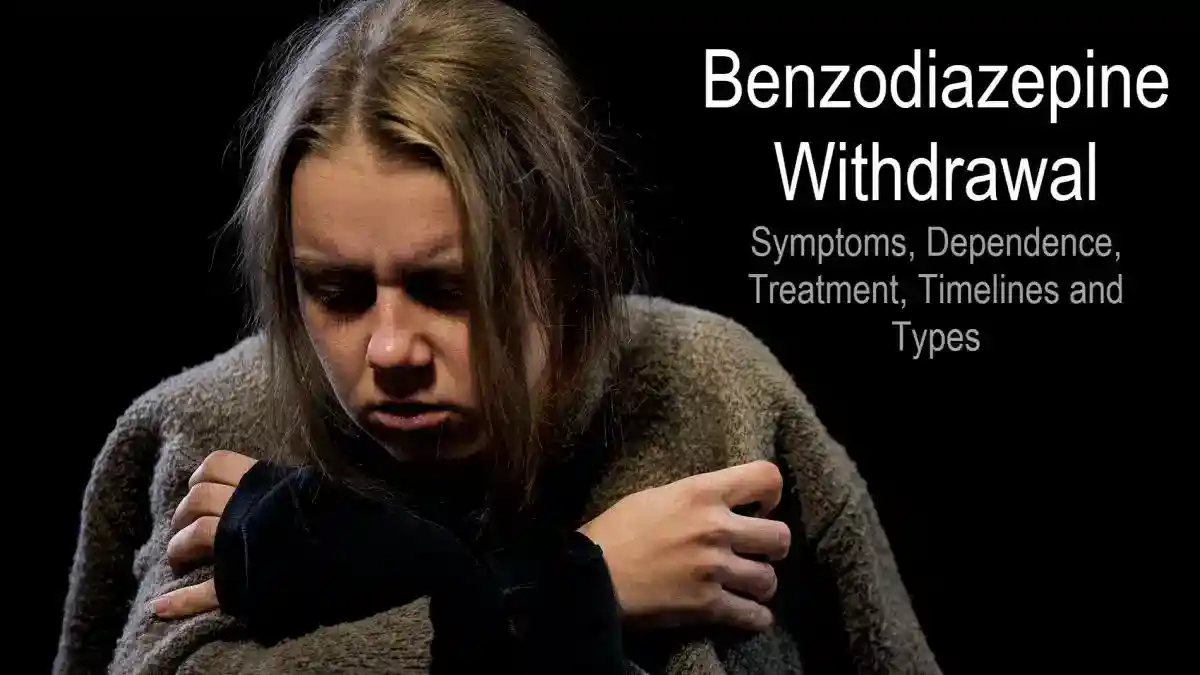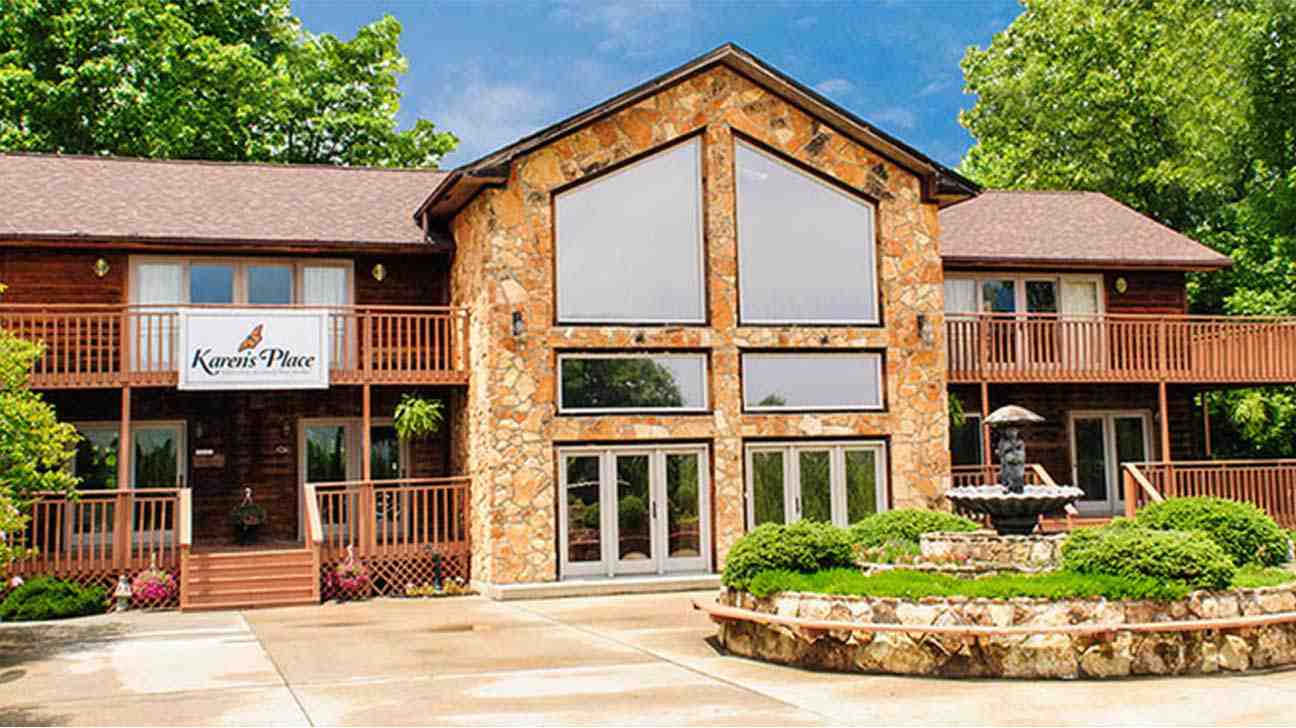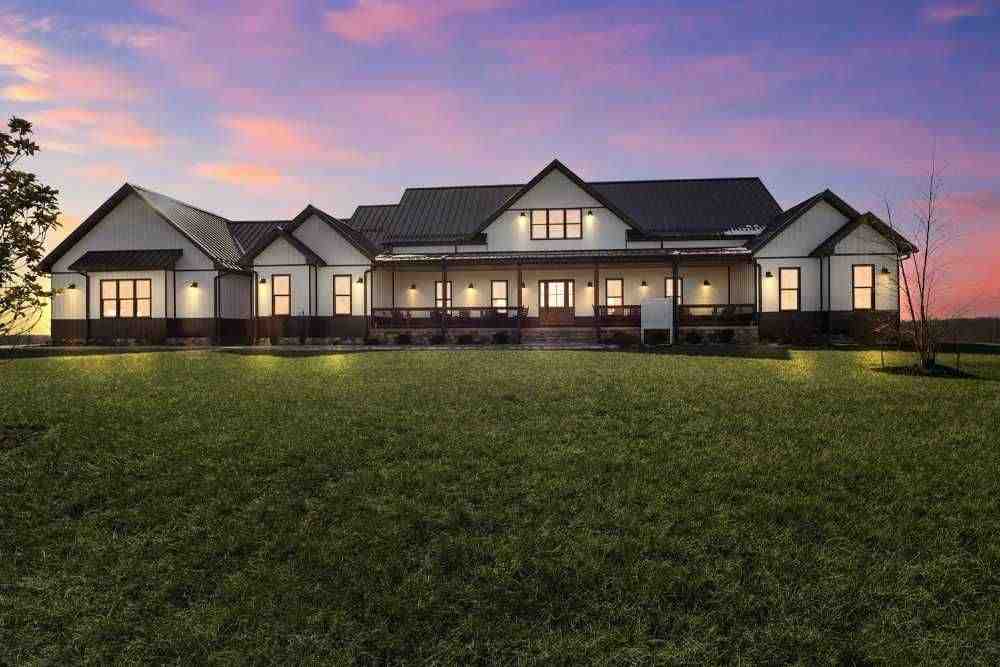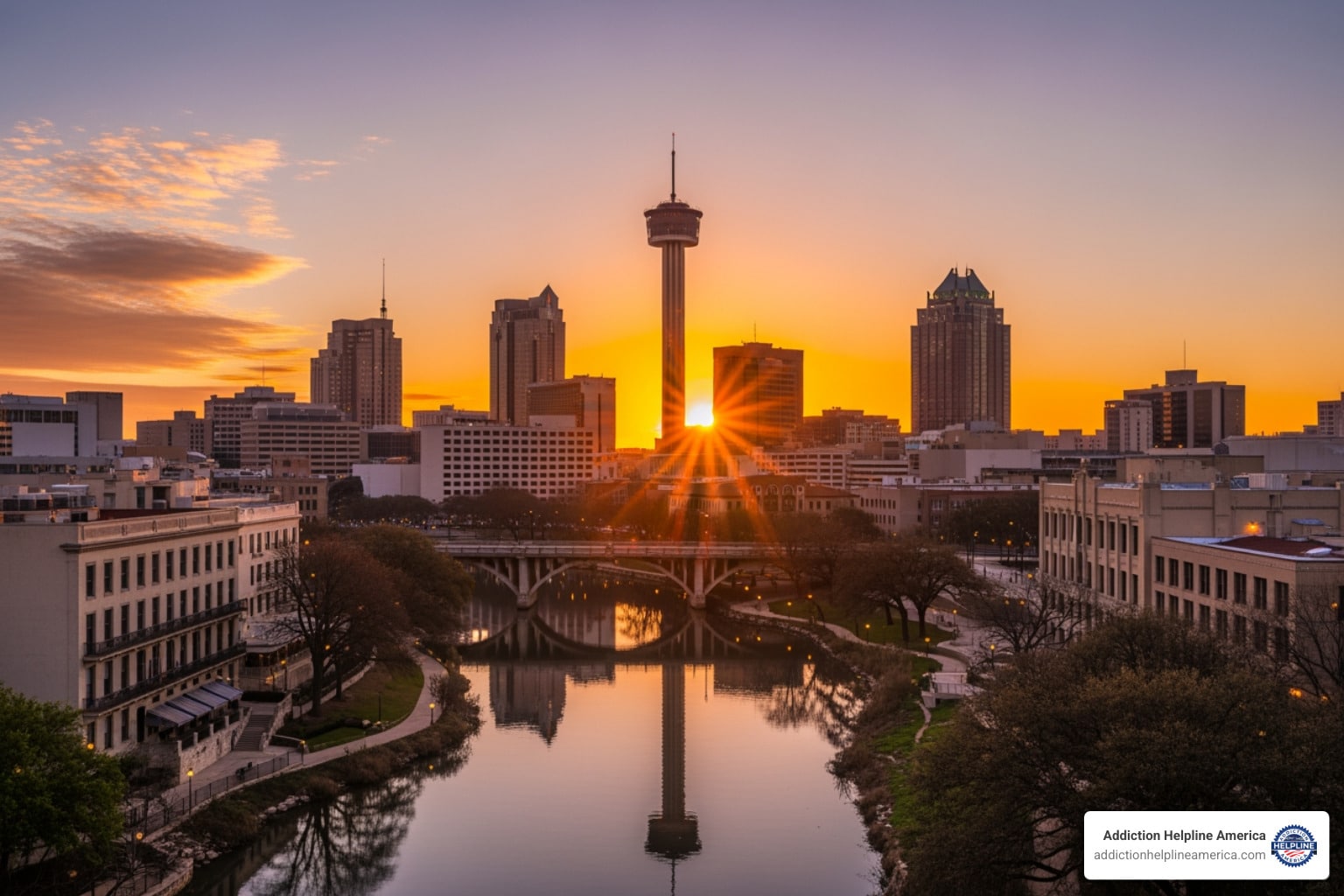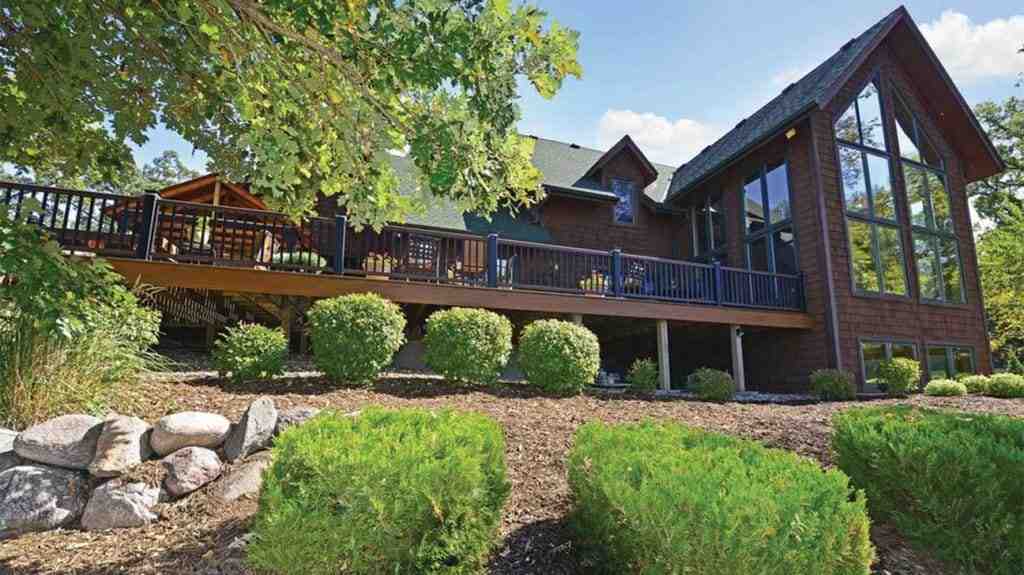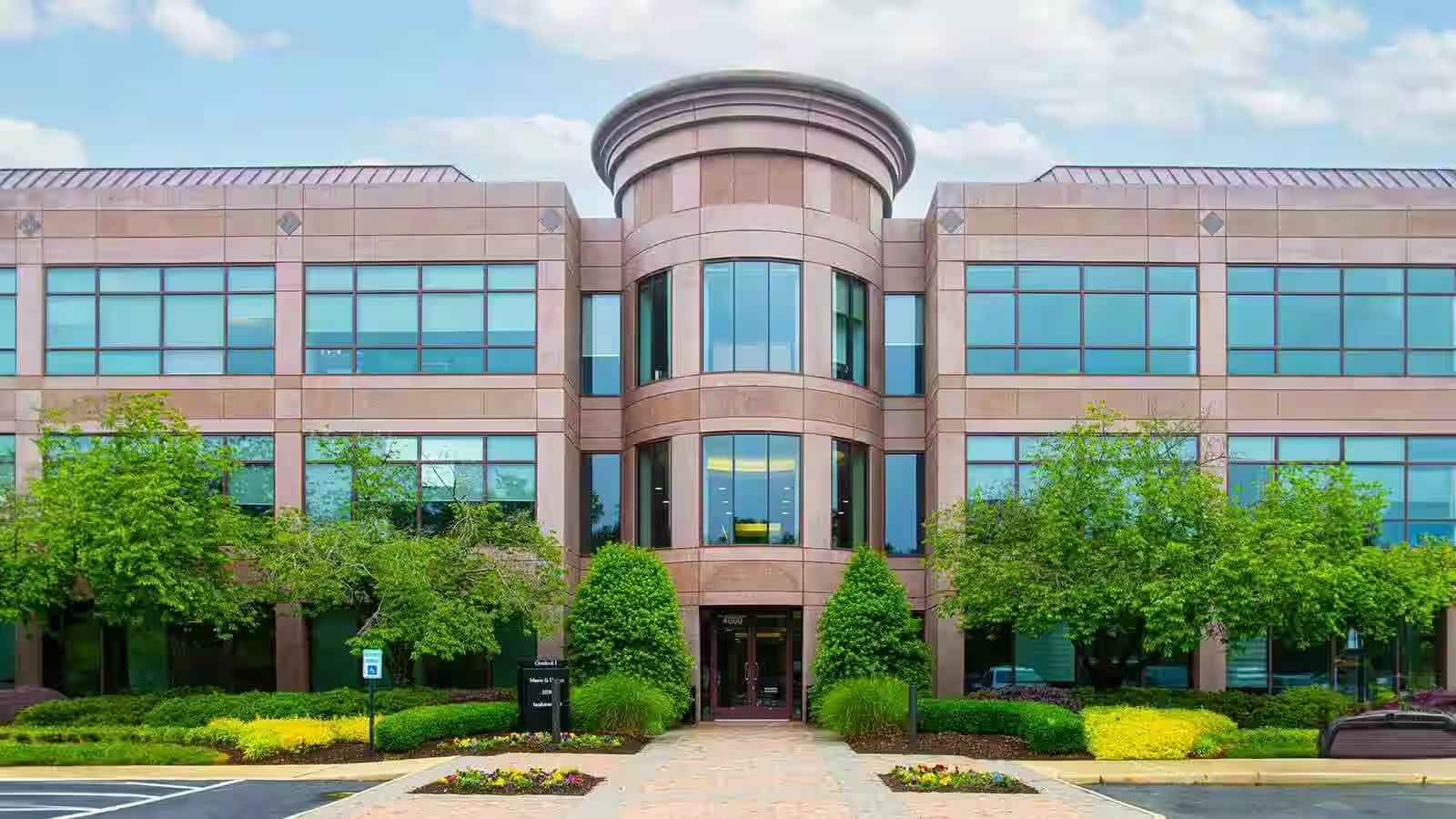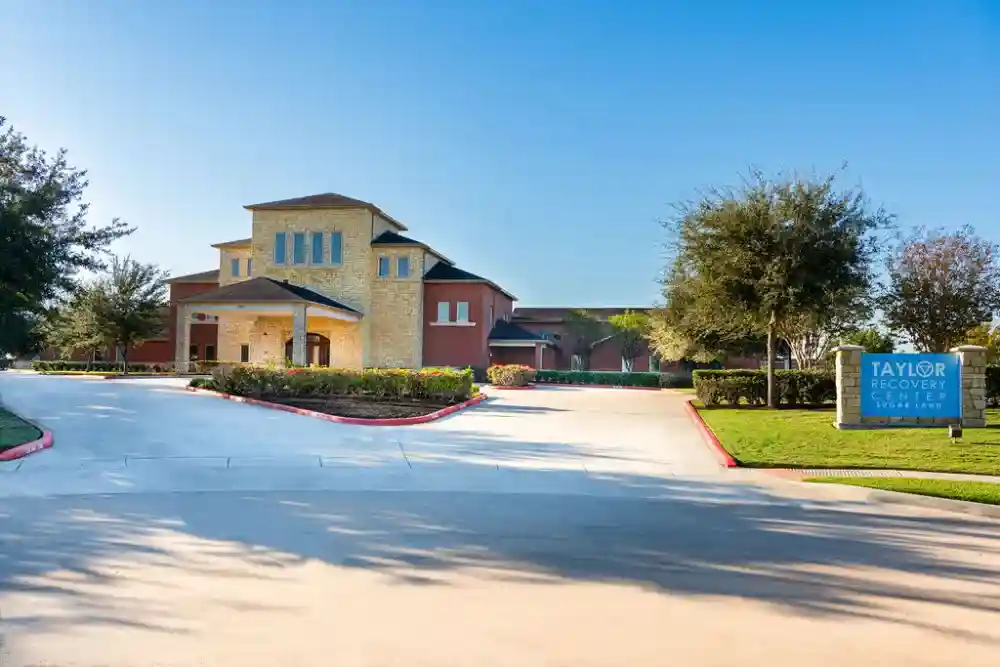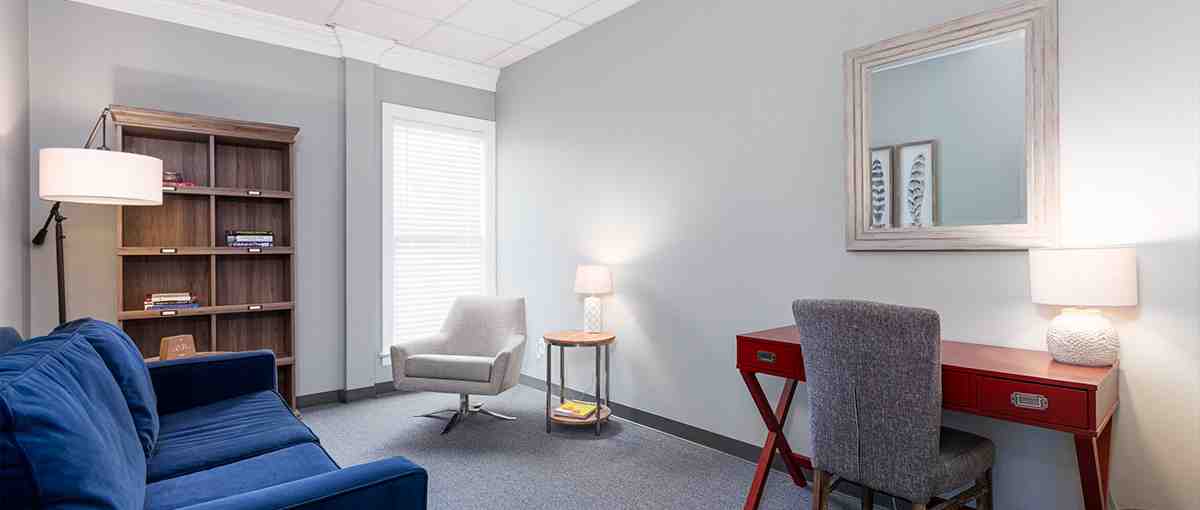
Why Rehab Facilities for Depression Can Change Your Life
Rehab facilities for depression offer intensive, structured programs for individuals with severe depression, providing 24/7 support, evidence-based therapies, and a safe space away from daily triggers.
Key things to know about depression rehab:
- Yes, you can go to rehab for depression, not just for substance abuse.
- Inpatient programs provide immersive, round-the-clock care (typically 2-6+ weeks).
- Outpatient programs offer structured treatment while you live at home.
- Treatment includes CBT, DBT, group and individual therapy, and medication management.
- Success rate: 80% of people who seek professional help see improvement in 4-6 weeks.
- Best for: severe symptoms, treatment-resistant depression, co-occurring disorders, or self-harm risk.
Depression is a widespread and treatable condition. It affects nearly 7% of U.S. adults each year, yet over half never seek professional help. Many don’t realize that mental health rehabilitation facilities apply the same intensive, comprehensive approach proven effective in addiction recovery to treating depression.
In a rehab setting, you remove yourself from negative influences and gain access to a multidisciplinary team of psychiatrists, therapists, and medical professionals. They are all focused on your healing in a supportive environment. The complications of untreated depression can be severe, leading to an increased risk of heart attack and accounting for over two-thirds of suicide-related deaths in the U.S. Getting help is a life-saving step.
At Addiction Helpline America, we guide individuals and families through the process of finding appropriate rehab facilities for depression. Our team offers compassionate, confidential connections to proven treatment programs, helping you take the critical first step toward reclaiming your life.
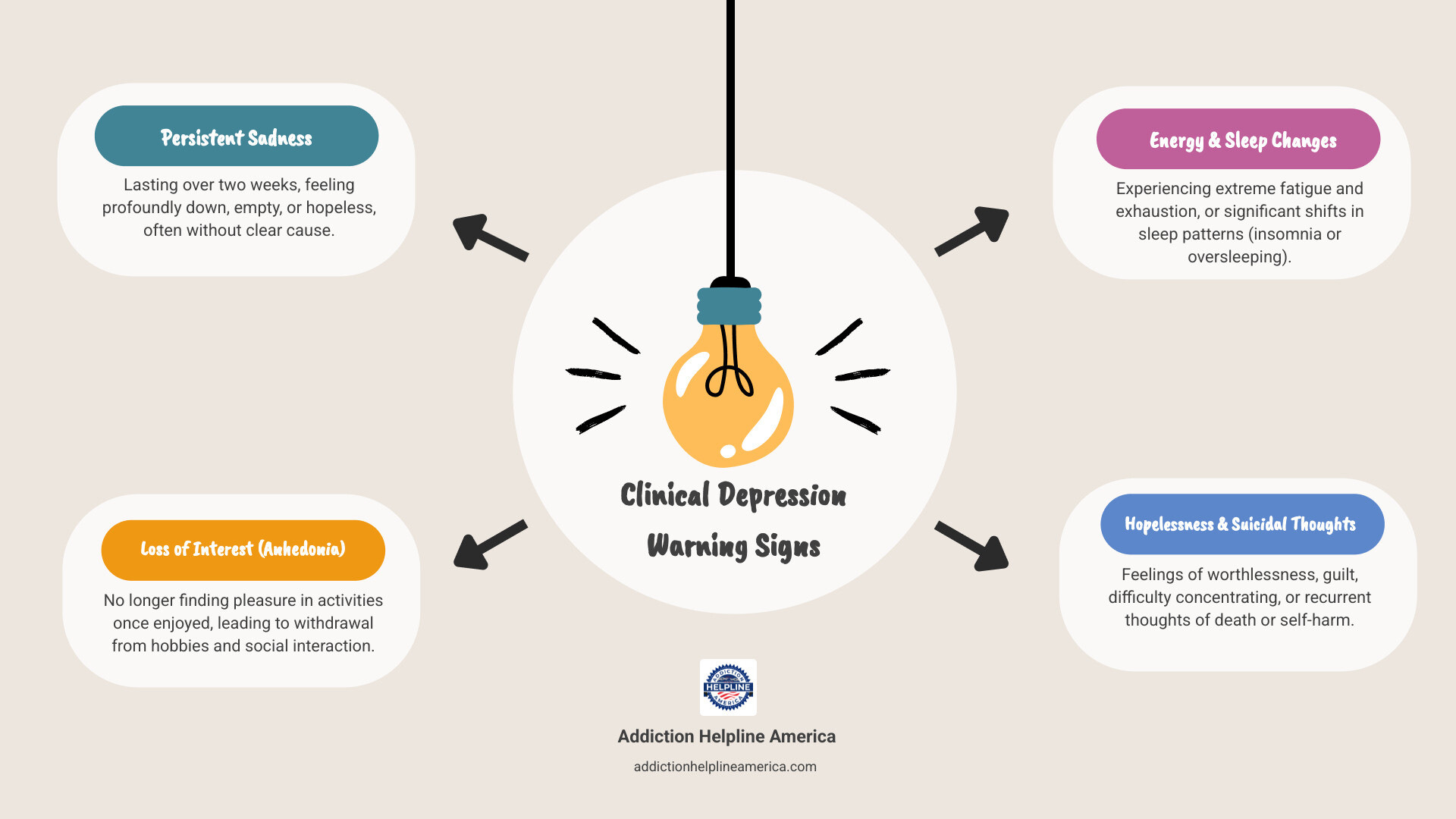
Understanding When Intensive Treatment is Needed
Wondering if your depression is serious enough for rehab facilities for depression? While some manage with weekly therapy, others need a higher level of care. Recognizing when you’ve crossed that threshold is the first step toward getting the support you need.
Signs that you may need more intensive treatment include:
- Severe emotional symptoms: Profound apathy, chronic anger, extreme sadness, or overwhelming hopelessness that is constant and debilitating.
- Debilitating physical symptoms: Chronic exhaustion, social withdrawal due to lack of energy, and significant changes in sleep or appetite. These are symptoms of a serious medical condition, not character flaws.
- Major impact on daily life: Inability to work or attend school, struggling with personal hygiene, failing to meet family responsibilities, or complete social isolation.
- Treatment-resistant depression: When months or years of standard therapy and multiple medications have failed to improve your symptoms, an immersive environment can provide new avenues for healing.
- Risk of self-harm: Any thoughts of suicide or self-harm are a medical emergency. Intensive treatment provides a safe, supervised environment to manage this risk.
- Co-occurring disorders: When depression exists alongside anxiety, PTSD, or a substance use disorder, integrated care that addresses all conditions simultaneously is essential. You can learn more about specialized approaches through our Depression Treatment programs and our guide on Bipolar Disorder treatment.
If you recognize these signs, it’s a powerful indicator that you’re ready to consider getting help.
Inpatient vs. Outpatient Rehab for Depression
When exploring rehab facilities for depression, you’ll find two main types: inpatient and outpatient. Both offer structured treatment, but they are designed for different levels of severity.
Inpatient rehab means you live at the facility, making healing your only job. It provides 24/7 medical and therapeutic support, which is crucial for severe symptoms or a high risk of self-harm. A key benefit is the removal from triggers—you step away from daily stressors and negative influences. The structured schedule of therapy, workshops, and holistic activities provides a grounding routine. Treatment typically lasts from a few days to several weeks, depending on individual needs.
Outpatient rehab allows you to live at home and attend scheduled treatment sessions. This offers greater flexibility to maintain work, school, or family responsibilities. It’s often suitable for moderate depression or as a step-down from inpatient care. You practice coping skills in your real-world environment, reinforcing what you learn in therapy. Outpatient programs are generally less expensive as they don’t include room and board.
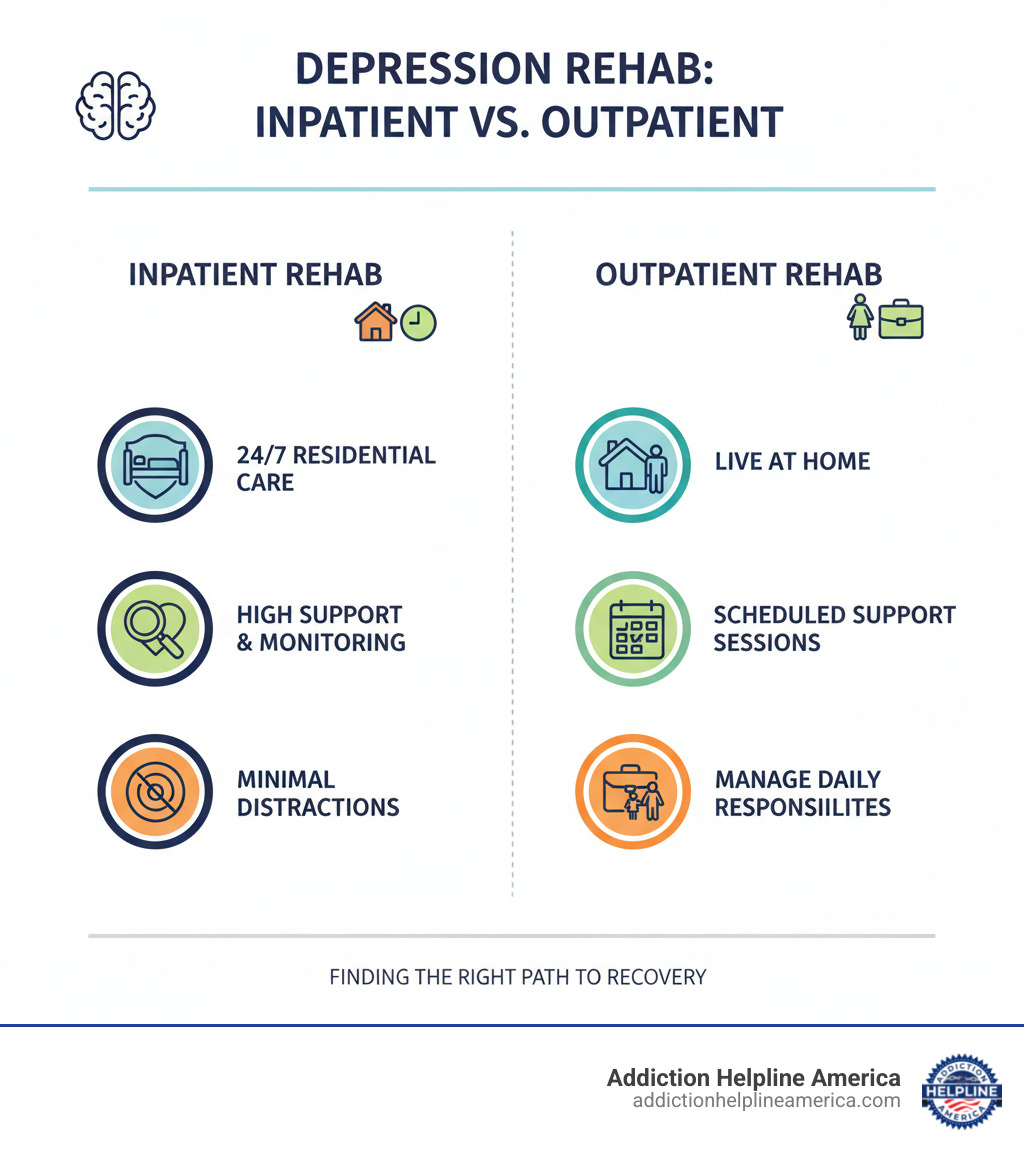
| Feature | Inpatient Rehab for Depression | Outpatient Rehab for Depression |
|---|---|---|
| Environment | Residential, 24/7 supervision | Live at home, attend sessions at facility |
| Support Level | High, constant medical and therapeutic monitoring | Moderate, scheduled therapeutic support |
| Distractions | Minimal, removed from external stressors and triggers | Present, must manage daily life while in treatment |
| Intensity | High, daily structured schedule of therapies | Moderate, regular scheduled sessions (3-5 times per week) |
| Cost | Generally higher (includes room, board, and 24/7 care) | Generally lower (focus on therapeutic services) |
| Ideal for | Severe depression, high self-harm risk, complex co-occurring disorders | Moderate depression, step-down from inpatient, strong home support |
The right choice depends on your specific needs. Inpatient care offers intensive support for severe cases, while outpatient care provides flexibility for more manageable symptoms.
Why Choose Rehab Over Other Options?
Why consider a rehab facility for depression instead of just weekly therapy? The answer lies in the comprehensive, immersive support that other options can’t provide.
- Structured Support: Rehab provides a purposeful, predictable schedule of therapeutic activities. This routine is grounding when depression has made life feel chaotic.
- Multidisciplinary Team: You gain access to a coordinated team of psychiatrists, therapists, and medical staff. They all work together on your care plan, which is far less overwhelming than managing appointments yourself.
- Peer Support: Being surrounded by others who understand your struggle creates a powerful sense of community. Group therapy and shared activities reduce the isolation that depression thrives on.
- Safe Environment: Rehab removes you from triggers like a stressful job or toxic relationship. This allows you to focus entirely on healing and learn new ways of coping in a controlled, supportive space.
At Addiction Helpline America, we’ve seen how this level of care transforms lives. If you’re wondering if it’s right for you, we’re here to provide compassionate, confidential guidance.
Comparing the Best Rehab Facilities for Depression
Finding the right rehab facility for depression means finding the one that aligns with your specific needs, not a one-size-fits-all solution. A rehab facility offers an intensive, integrated approach that goes beyond weekly therapy to address complex mental health challenges from every angle.

When evaluating facilities, focus on these key factors:
- Accreditation and Licensing: Look for accreditation from organizations like The Joint Commission or CARF. These certifications ensure the facility meets high standards for safety and quality of care.
- Staff Credentials: The quality of care depends on the team’s expertise. A top-tier facility will have a multidisciplinary team of licensed professionals, including board-certified psychiatrists, psychologists, and therapists. Don’t hesitate to ask about their qualifications.
- Individualized Treatment Plans: Your depression is unique, and your treatment should be too. The best facilities conduct thorough assessments to create a personalized plan. Avoid any facility that promotes a one-size-fits-all program.
- Evidence-Based Therapies: Ensure the facility uses treatment methods backed by scientific research. You deserve therapies that are proven to be effective.
Key Treatment Programs and Therapies to Look For
The core of any effective rehab facility for depression is its therapeutic programming, designed to equip you with skills for long-term wellness.
- Cognitive Behavioral Therapy (CBT): A cornerstone of depression treatment, CBT helps you identify and challenge the negative thought patterns and behaviors that fuel depression. It’s a practical, action-oriented approach to change how you think, feel, and act.
- Dialectical Behavior Therapy (DBT): Particularly effective for intense emotions, DBT teaches skills in four key areas: mindfulness, distress tolerance, emotion regulation, and interpersonal effectiveness. It can be life-changing for those with overwhelming emotional swings.
- Individual Therapy: This provides a private, one-on-one space with a therapist to explore personal history, past trauma, and specific challenges contributing to your depression.
- Group Therapy: Sharing experiences with peers who understand your struggle is invaluable. It reduces isolation, offers new perspectives, and fosters a powerful sense of community.
- Family Counseling: Depression affects the whole family. These sessions improve communication and educate loved ones on how to best support your recovery, strengthening your entire support system.
- Holistic Therapies: Many facilities integrate therapies like yoga, mindfulness meditation, art therapy, or nutritional counseling. These activities address your whole person, recognizing the deep connection between mental, physical, and spiritual well-being. For more on therapeutic approaches, see our guide on counseling for addiction.
The Importance of Dual Diagnosis Capability
A facility’s ability to treat co-occurring disorders—also called dual diagnosis—is often essential for successful recovery. This is not just a bonus feature; it’s a necessity for many.
Co-occurring disorders mean having a mental health condition and a substance use disorder at the same time. Depression and substance abuse often create a vicious cycle: substances are used to numb depressive symptoms, which ultimately worsens the depression, leading to more substance use. Similarly, depression and anxiety frequently go hand-in-hand, with each condition exacerbating the other. Scientific research shows these co-occurring conditions are common and require specialized care.
An integrated treatment approach is crucial. Instead of treating each issue separately, integrated care addresses both conditions simultaneously within a single, unified plan. The clinical team understands how the conditions interact and can treat the whole person, not just one set of symptoms. This comprehensive approach leads to significantly better long-term outcomes.
At Addiction Helpline America, we prioritize finding facilities that specialize in integrated care. If you or a loved one are also dealing with bipolar disorder, our guide on Bipolar Disorder treatment may be helpful.
What to Expect During Your Stay
Entering a rehab facility for depression is a major step, and knowing what to expect can ease the transition. Here’s a look at a typical journey.
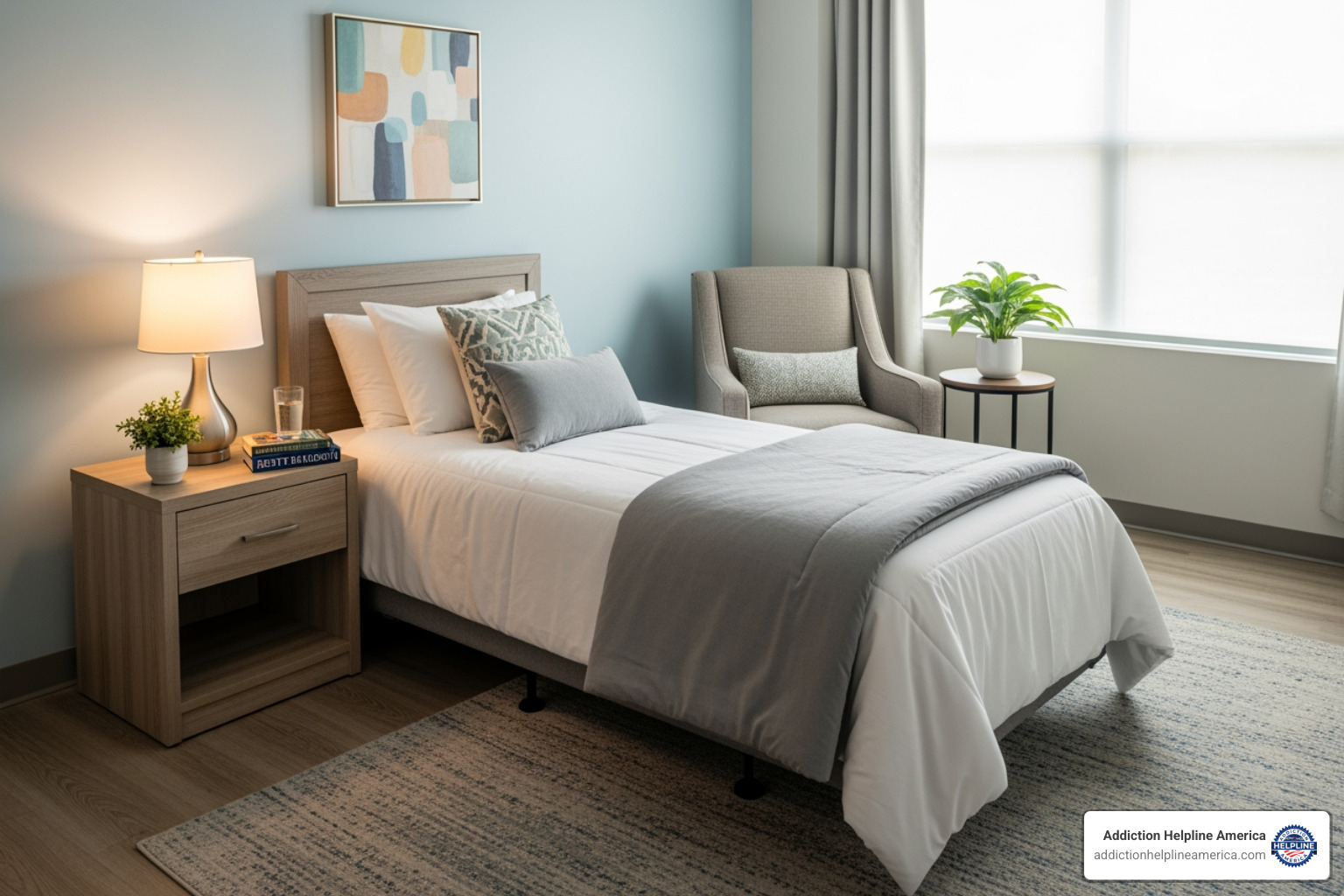
Your journey starts with an admissions process, usually a phone call to discuss your needs. Upon arrival, you’ll undergo a comprehensive initial assessment with a team of doctors, psychiatrists, and therapists. They’ll review your medical and mental health history to understand your unique situation. This allows them to create your personalized treatment plan—a unique roadmap for your recovery that outlines the most beneficial therapies and activities for you. This plan is flexible and evolves as you progress.
A typical day in rehab follows a supportive, structured schedule. Days often begin with mindfulness or yoga, followed by the core of the program: therapy sessions. You’ll participate in individual therapy, group therapy, and educational workshops on topics like coping skills and relapse prevention. Meals are often communal, providing opportunities for peer connection. The schedule also includes time for recreational activities and personal reflection. The entire environment is a safe space where your only job is to heal, free from outside stressors. If substance use is a co-occurring issue, your stay may begin with a medically supervised detox process to manage withdrawal symptoms safely.
How Long Does Depression Rehab Last?
The length of your stay depends on your individual needs, the severity of your symptoms, and your response to treatment. There is no universal timeline.
- Short-term stays (a few days to two weeks) are often for acute crisis stabilization or as a transition from a higher level of care.
- Long-term programs (30, 60, 90 days, or more) are recommended for severe or chronic depression and co-occurring disorders. This extended time allows for deeper therapeutic work and the solidifying of new, healthy habits.
Factors influencing your length of stay include the severity of your depression, the presence of co-occurring conditions, and your individual progress. The goal is to ensure you are stable and have a solid foundation for recovery before stepping down to a lower level of care.
Aftercare and Long-Term Recovery
Recovery doesn’t end when you leave rehab. What happens next is just as critical, which is why aftercare planning is your lifeline for continued success.
Before you leave, your team will help you create a personalized aftercare plan. This plan is your roadmap for navigating life after treatment and typically includes:
- Continued Therapy: Transitioning to outpatient individual or group therapy to reinforce healthy patterns.
- Support Groups: Connecting with peers through organizations like the Depression and Bipolar Support Alliance (DBSA) for shared understanding and encouragement.
- Sober Living Environments: For those with co-occurring substance use disorders, these offer a structured bridge between rehab and independent living.
- Relapse Prevention Strategies: A concrete plan to identify triggers, manage stress, and handle setbacks.
- Medication Management: Ongoing work with a psychiatrist to ensure medications remain effective.
Committing to aftercare is a commitment to your long-term well-being. At Addiction Helpline America, we connect you with facilities that prioritize robust aftercare planning, because we know it’s the key to lasting success.
Frequently Asked Questions about Rehab Facilities for Depression
Can you go to rehab just for depression?
Yes, absolutely. There is a common misconception that rehab is only for substance abuse. Mental health rehabs specialize in treating conditions like severe depression, anxiety, and other mood disorders. These facilities provide an intensive, immersive therapeutic environment that goes far beyond weekly therapy sessions. You step away from daily triggers to focus entirely on healing, working with a dedicated team of professionals and learning sophisticated coping mechanisms to build a foundation for lasting recovery.
How effective is rehab for depression?
The evidence is overwhelmingly positive. Depression is a highly treatable condition, and structured rehab programs have high success rates. An encouraging statistic shows that 80% of people who seek professional help for depression see significant improvement within four to six weeks.
Success depends on several factors, including your personal commitment to the process, the quality of the program, and your follow-through with aftercare. Recovery is a journey, but with the right help and your active participation, the results can be life-changing.
What types of depression are treated in rehab?
Rehab facilities for depression are equipped to treat the full spectrum of depressive disorders. Treatment is always customized to your specific diagnosis. Common types treated include:
- Major Depressive Disorder (MDD): Characterized by persistent sadness, loss of interest, fatigue, and feelings of worthlessness that are severe enough to interfere with daily life.
- Persistent Depressive Disorder (Dysthymia): A chronic form of depression with less severe but long-lasting symptoms (two years or more).
- Bipolar Depression: The depressive phase of bipolar disorder, which requires specialized treatment to manage both depressive and manic episodes.
- Postpartum Depression: A serious form of depression affecting new parents after childbirth, which goes far beyond the “baby blues.”
A reputable facility will conduct a thorough assessment to provide an accurate diagnosis and create a personalized treatment plan custom to your unique needs and recovery goals.
Finding the Right Path to Recovery
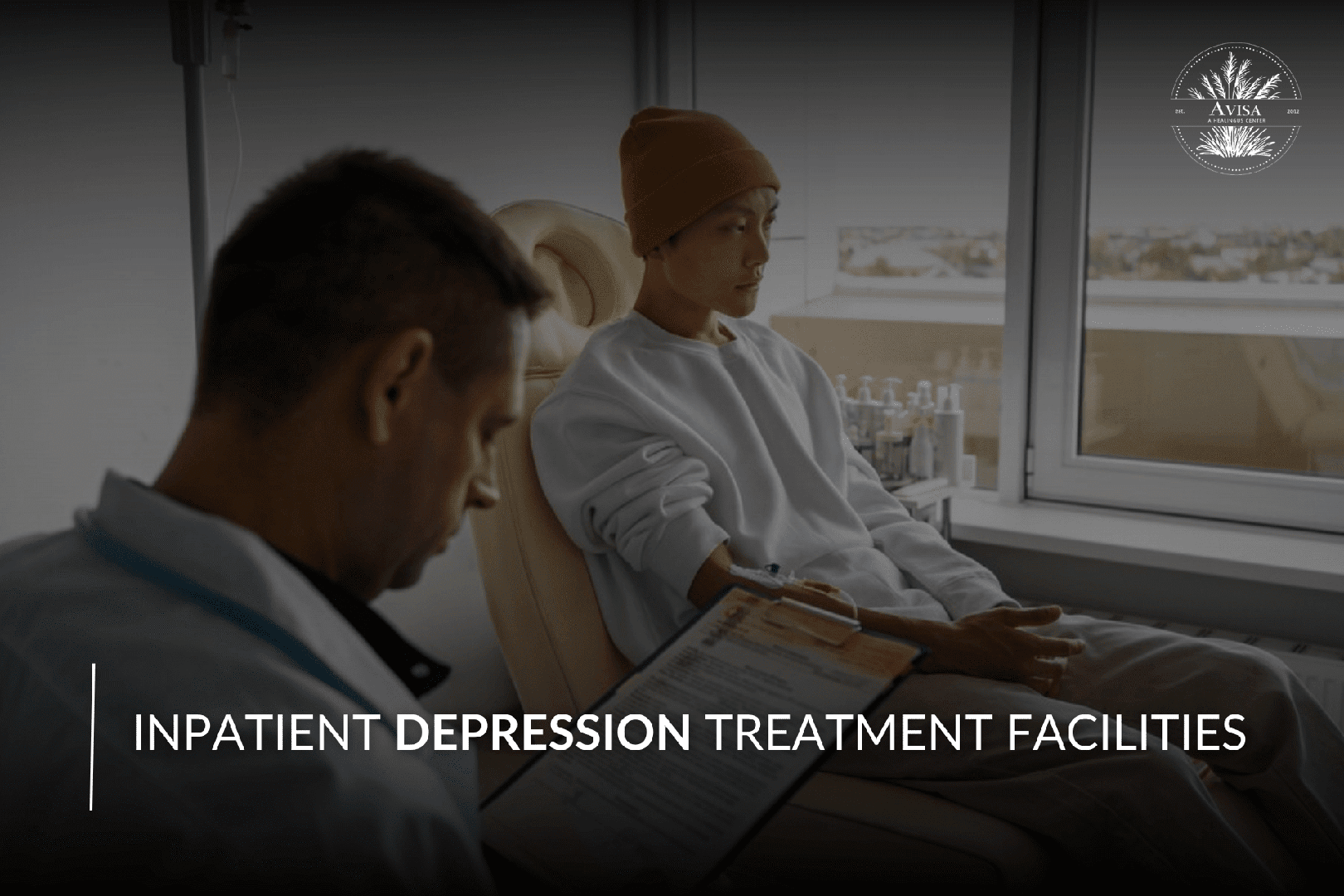
Choosing to seek help for depression is a courageous and powerful step toward healing. We’ve explored what makes rehab facilities for depression so effective: immersive environments, 24/7 professional support, and evidence-based therapies like CBT and DBT. We’ve also highlighted the importance of individualized plans and dual diagnosis capabilities.
The “best” facility is the one that fits your unique situation. Look for proper accreditation, experienced staff, personalized treatment, and a commitment to proven therapies.
Depression can make you feel like you don’t deserve help or that nothing will change. That is the illness talking. The truth is that you deserve support, and effective treatment is available—with 80% of people seeing improvement within weeks of getting professional help.
At Addiction Helpline America, our mission is to make this process simpler. We offer free, confidential guidance to help you find the right treatment program from our trusted network. Serving all fifty states and the District of Columbia, we connect individuals and families with facilities that match their specific needs, insurance, and preferences.
You don’t have to do this alone. We understand how exhausting this process can be while struggling with depression. We’re here to be your partner, answer your questions without judgment, and help you take that first step toward reclaiming your life.
Our helpline is 100%
free & confidential
If you or someone you care about is struggling with drug or alcohol addiction, we can help you explore your recovery options. Don’t face this challenge alone—seek support from us.
Programs
Resources
Will my insurance
cover addiction
treatment?
We're ready to help
Find the best
drug or alcohol treatment
center
Are you or a loved one struggling with addiction? Call today to speak to a treatment expert.


